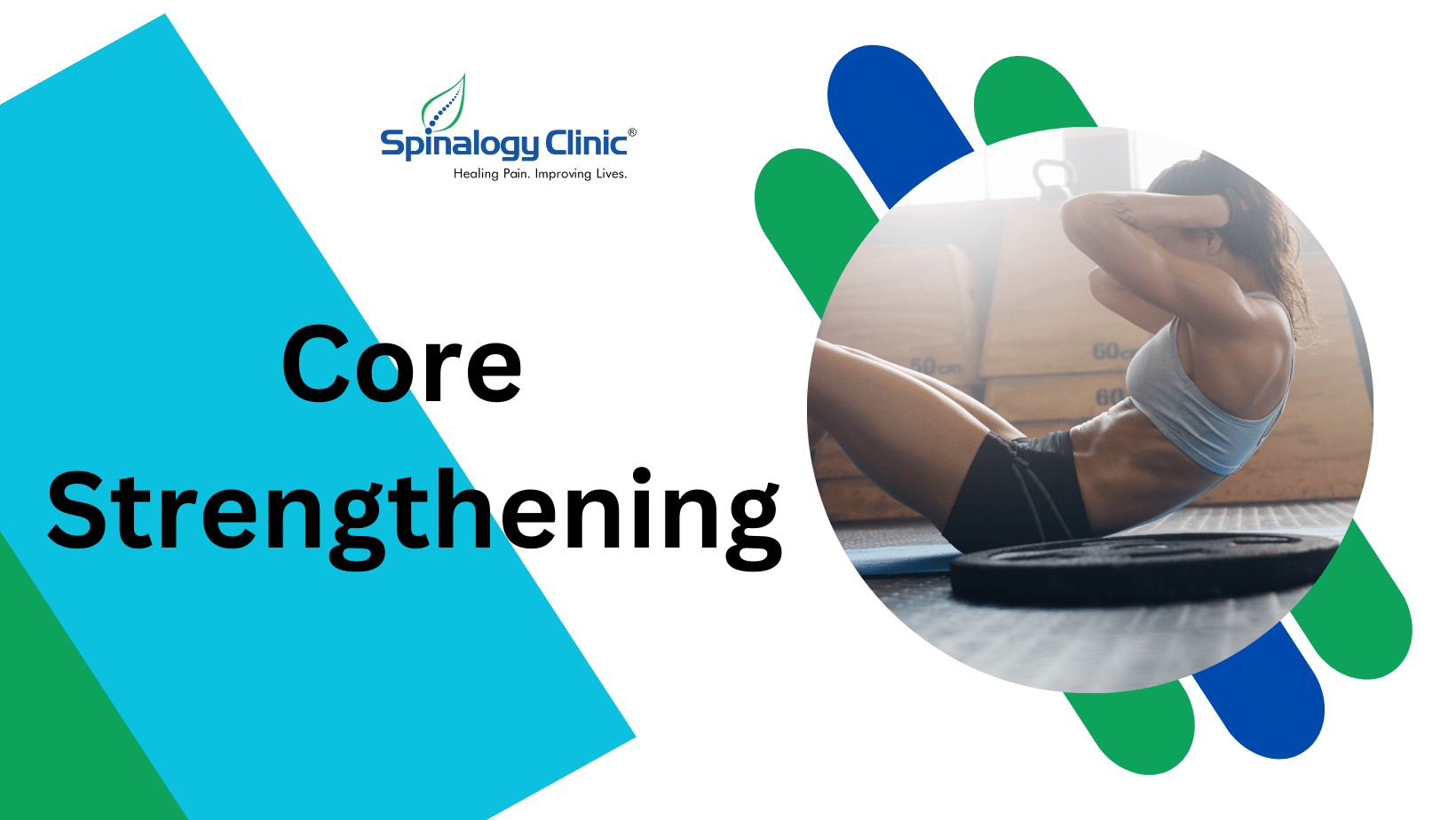Core Strengthening
A strong core is a key to maintaining back health and keeping the pain at bay. External Obliques, Internal Obliques, Rectus Abdominis, Transverses Abdominis, Pyramidalis are 5 important core muscles.
Back strain and sprain are very common complaints in patients and this is mainly because their back muscles and the spine have to bear extra pressure due to weak abdominal muscles.
Back pain can be greatly avoided and managed if you have a strong core. The abdominal muscles help in maintaining the right posture and also assist in doing heavy lifting which usually takes a huge toll on the back. A strong core will provide extra support and strength to the spine and keep it properly aligned. Other than posture, there are many activities you can perform to strengthen your core for a stronger back.
Here are a few tips for maintaining back health along with core strengthening.
Regular Stretching: After spending hours on a chair working on the computer or performing repetitive tasks which involve the back, stretching can be especially relaxing.
Keeping your weight in check: Maintaining the right weight and BMI is very important for the overall health of the body. Obese patients usually complain of back problems because their spine and adjoining muscles undergo extra stress compared to a healthy person. Losing a few kilos might actually be the key to reducing your back issues.
Lifestyle changes: Diet and rest play an important role in maintaining the proper health of the body. The muscles need nutrition and rest to recover and therefore a diet rich in vitamins, minerals, and antioxidants along with a minimum of 8 hours of sleep play a crucial role in keeping the spine in good condition. Posture also plays a central role in preventing injuries to the spine. While lifting heavy objects use the strength of your core and legs instead of relying entirely on the back. If you have a hunched posture try to keep your back straight with the help of abdominal muscles to prevent any straining of the back muscles.
Exercises for core strengthening: While lifestyle changes can greatly prevent injury to your spine, building a strong core is central to keeping it healthy and functional. However, make sure you’re performing the exercises correctly and without pushing yourself too much. You should know your limits and also consult a physical therapist or physician before performing any of the mentioned activities.
- Elbow Plank
Planks are one of the most effective ways of strengthening the core and also one of the most difficult.
Lie flat on your stomach with your legs extending outwards in a straight line. Now with your forearms touching the ground and your elbows aligned with the shoulders, lift your body upwards with your shoulder, back, and legs in a straight line. The pressure should be felt in the abdominal muscles and not the spine. Stay in this position for 30 seconds, and repeat 2 times.
- Crunches
For this exercise lie flat with your back towards the ground. Now bend your knees with your feet hip-distance apart and interlock your fingers. Take a deep breath in and as you exhale, pull your upper body from the ground, using the core muscles. Make sure to not use the neck muscles while lifting the head and back as this can injure your neck and spine. Repeat this exercise 10 times with 3 sets each.
- Push-ups
Push-ups are great for not just core strengthening but building upper body strength as well. Lie down on your mat with your face towards the ground. Make sure your entire body is properly aligned. Now with your positioned a little wider than your shoulders, lift your body up using the arms and core. Your lower body should also come up with only your toes touching the ground.
Now lower your body and repeat 3 sets with 10 push-ups each.
These exercises are great for building core strength but should be performed with caution. Taking the help of a physical therapist is highly advisable to avoid any injuries and further aggravation of pain.

_1744793045.png)
_1743751136.png)
_1738219992.png)
